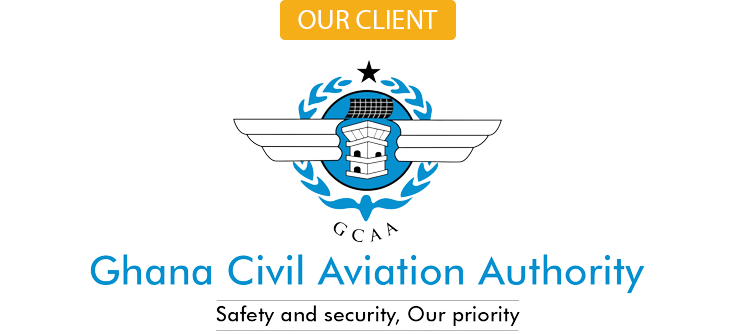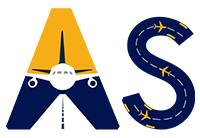In aviation, instead of regular ABCs, there’s something called the aviation alphabet. It’s a special set of words that represent each letter of the English alphabet. This helps pilots talk clearly and safely with air traffic controllers while flying. It’s important because it makes communication better, which keeps everyone on the plane safe.
When pilots talk to air traffic control, sometimes the sound isn’t clear because of noise or other problems. This can make it hard to understand letters in English. To fix this, a group called the International Civil Aviation Organization (ICAO) made a special alphabet for talking on the phone or radio. This alphabet uses specific words for each letter and number, making it easier to understand and reducing mistakes when spelling out parts of a message.
ICAO Phonetic Alphabet
The ICAO phonetic alphabet helps pilots talk to each other while flying. It gives a special word for each of the 26 letters of the English alphabet.
| Letter | Word | Pronunciation | Morse |
|---|---|---|---|
| A | Alfa | AL FAH | .- |
| B | Bravo | BRAH VOH | -… |
| C | Charlie | CHAR LEE or SHAR LEE | -.-. |
| D | Delta | DELL TAH | -.. |
| E | Echo | ECK OH | . |
| F | Foxtrot | FOKS TROT | ..-. |
| G | Golf | GOLF | –. |
| H | Hotel | HOH TEL | …. |
| I | India | IN DEE AH | .. |
| J | Juliett | JEW LEE ETT | .— |
| K | Kilo | KEY LOH | -.- |
| L | Lima | LEE MAH | .-.. |
| M | Mike | MIKE | — |
| N | November | NO VEM BER | -. |
| O | Oscar | OSS CAH | — |
| P | Papa | PAH PAH | .–. |
| Q | Quebec | KEH BECK | –.- |
| R | Romeo | ROW ME OH | .-. |
| S | Sierra | SEE AIR RAH | … |
| T | Tango | TANG GO | – |
| U | Uniform | YOU NEE FORM or OO NEE FORM | ..- |
| V | Victor | VIK TAH | …- |
| W | Whiskey | WISS KEY | .– |
| X | X-Ray | ECKS RAY | -..- |
| Y | Yankee | YANG KEY | -.– |
| Z | Zulu | ZOO LOO | –.. |
Aviation Numbers Meaning
| Number | Word | Pronunciation | Morse |
|---|---|---|---|
| 1 | One | WUN | .—- |
| 2 | Two | TOO | ..— |
| 3 | Three | TREE | …– |
| 4 | Four | FOW ER | ….- |
| 5 | Five | FIFE | ….. |
| 6 | Six | SIX | -…. |
| 7 | Seven | SEV EN | –… |
| 8 | Eight | AIT | —.. |
| 9 | Nine | NIN ER | —-. |
| 0 | Zero | ZE RO | —– |
| . | Decimal | DAY SEE MAL | |
| 100 | Hundred | HUN DRED | |
| 1000 | Thousand | TOU SAND |
The Story of Aviation Alphabets
The story of aviation alphabets, often referred to as the NATO phonetic alphabet or the International Radiotelephony Spelling Alphabet, is quite fascinating and practical. It’s a set of standardized phonetic alphabet codes used worldwide in aviation, maritime, and other industries to ensure clear communication over radio or telephone, especially when the speaker and listener may not share the same native language or accent.
The need for a standardized phonetic alphabet arose from the limitations of early communication systems, particularly in noisy or stressful environments like military operations or air traffic control. The first widely recognized phonetic alphabet was introduced by the International Telecommunication Union (ITU) in the mid-20th century.
Here’s how the current NATO phonetic alphabet evolved:
- 1913: The International Telegraph Union first developed a spelling alphabet that was widely used in international telegraphy. This early version included words like “Able,” “Baker,” “Charlie,” etc.
- World War I: During World War I, different countries developed their own phonetic alphabets to improve communication on the battlefield. These were often ad-hoc and not standardized.
- World War II: The need for standardized communication during World War II led to the development of various phonetic alphabets by different nations. For example, the British used “Apples,” “Butter,” “Charlie,” while the United States used “Able,” “Baker,” “Charlie.”
- 1941: The Joint Army/Navy Phonetic Alphabet was introduced in the United States, which included words like “Alpha,” “Bravo,” “Charlie.” This alphabet was used by all branches of the U.S. military.
- 1956: The International Civil Aviation Organization (ICAO) adopted the current NATO phonetic alphabet as the international standard. This decision was made to ensure uniformity in communication across different languages and regions.
The NATO phonetic alphabet consists of 26 code words, each representing one letter of the English alphabet. Some of the more familiar ones include “Alpha,” “Bravo,” “Charlie,” “Delta,” and so on. Each word is carefully chosen to be easily distinguishable and not easily confused with others, even in noisy or stressful situations.
Over time, the NATO phonetic alphabet has become ubiquitous not only in aviation but also in various other fields where clear and precise communication is crucial. It’s taught in pilot training programs, used by air traffic controllers, emergency responders, military personnel, and even in everyday contexts like customer service calls or spelling out names and addresses over the phone.
The evolution of the aviation alphabets showcases the importance of standardized communication protocols in ensuring safety, efficiency, and clarity, particularly in high-stakes environments where misunderstandings can have serious consequences.
Conclusion
In the dynamic world of aviation, where every moment counts, effective communication is the cornerstone of safety and efficiency. The Aviation Phonetic Alphabet stands as a testament to the ingenuity of human innovation, transforming the way we communicate in the skies. As we look to the future of air travel, one thing remains certain – the language of aviation will continue to evolve, ensuring that the skies remain safe and accessible for generations to come.
What our client says?

The Aviation Software Company proved exceptional throughout our project, consistently keeping us informed about progress. They demonstrated remarkable flexibility in accommodating our requests and were a pleasure to work with. Without hesitation, we wholeheartedly endorse them for future development endeavors.
Explore More

